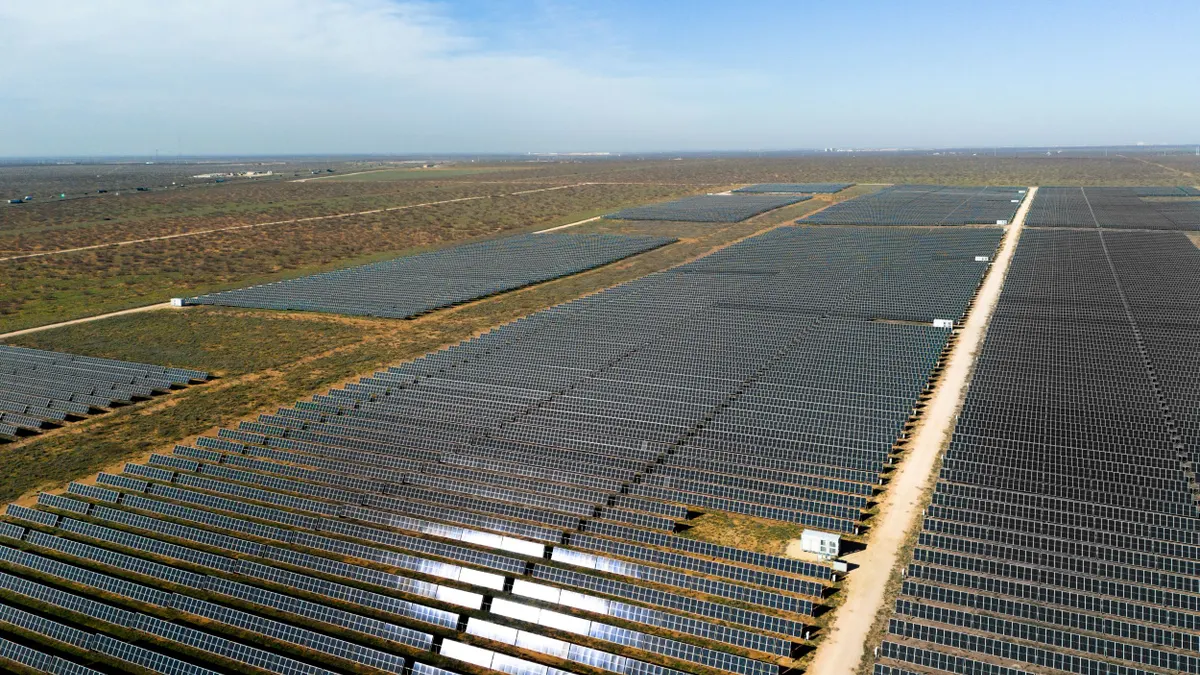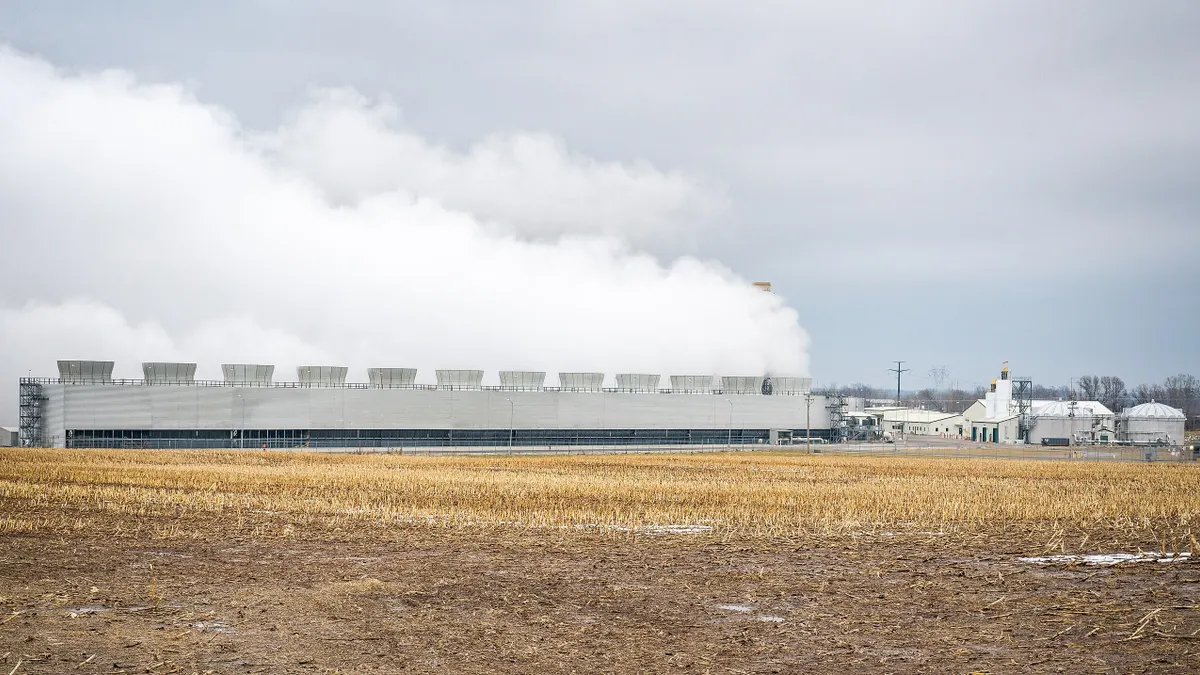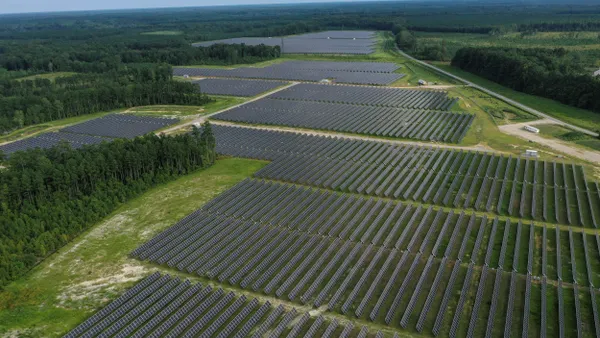Just as its importance was fading, the Public Utility Regulatory Policies Act, better known as PURPA, has made a comeback, complete with the contentious debates that have dogged the law since its passage in 1978.
In recent years, utilities in Idaho, Oregon, Utah, Michigan, Montana and North Carolina have mounted battles against key provisions of PURPA.
The battles have even crept into the world of rural cooperatives where PURPA previously had little purview. Delta-Montrose Electric Authority recently won the right to buy electricity independently of its wholesale supplier, Tri-State Generation & Transmission, and Kit Caron Electric Cooperative cited PURPA in its decision to sever ties with Tri-State.
Those battles were on display in Washington last month at a one-day technical conference held by the Federal Energy Regulatory Commission (FERC). The conference focused on two broad issues: the rates and terms that “qualifying facilities” are paid under PURPA and the proper size of QFs.
The meeting was held at the behest of Republican members of the Senate and House energy committees who were concerned that PURPA was no longer relevant, given the changes that have swept through the electric power market in the past three decades. While no clear consensus for reform of the law was reached, discussion at the conference provided an instructive outline of the issues PURPA poses nationwide.
Evolution of PURPA
PURPA was passed during the oil crises of the 1970s and was originally intended to spur the development of small renewable power plants and cogeneration plants – now known as combined heat and power (CHP).
The bill was passed at a time the power market was very different than it is today. Utilities were vertically integrated, controlling all generation, distribution and transmission as “natural monopolies” in their designated franchise territories.
The key provision of PURPA is Section 210, the mandatory purchase obligation, sometimes called “the PURPA put.” Section 210 obliged utilities to buy the electrical output from qualifying facilities (QFs) that met PURPA requirements in terms size and efficiency and, for CHP, thermal output. PURPA stipulated that utilities had to buy electricity from those QFs and provide non-discriminatory access to the grid.
The authors of PURPA wrote Section 210 into the law because, without it, the small power producers they hoped to encourage would have nowhere to sell their electrical output. The “put” created a market for those producers. It was successful beyond their wildest dreams.
One of the unintended consequences of PURPA was to open the flood gates of competition in power generation, but decades later the competition that followed has all but overwhelmed key provisions of PURPA.
By 2005 there were competitive power markets operating in New England, the Mid-Atlantic states, and in much of the Midwest and Texas. Under the Energy Policy Act of 2005 (EPAct 2005) utilities could be relieved of PURPA’s mandatory purchase obligation, if QFs in their territory have access to competitive markets.
FERC in October 2006 found that competitive markets in five regions — the Midwest Independent Transmission System Operator, PJM Interconnection, ISO-New England, the New York Independent System Operator and Electric Reliability Council of Texas —met the qualifications for competitive markets under the 2005 law. FERC later ruled that California’s ISO and the Southwest Power Pool also met those requirements.
EPAct 2005 also made an exception for smaller power projects, giving QFs 20 MW and below a “rebuttable presumption” that they do not have non-discriminatory access to competitive wholesale markets. Therefore, PURPA still applied for them.
In most parts of the United States – wholesale power markets cover about two-thirds of the U.S. population – PURPA became irrelevant for large-scale power generation, which was largely determined by the markets. But it continued to function for small QFs, even though activity fell to low levels, until about 2007.
In her filed testimony for the FERC meeting, Commissioner Kristine Raper of the Idaho Public Utilities Commission noted that for the first 25 years PURPA was in force the state’s utilities, Idaho Power and PacifiCorp, had accumulated about 500 MW of QF capacity. But since 2007, “the amount of PURPA generation for Idaho Power has increased nearly six-fold, and seven-fold for PacifiCorp.”
Idaho was not alone. Other states in the West, particularly the Northwest, and in the Southeast experienced a surge in QF applications.
The driving force behind the flood of QFs was “the saturation of renewables in states with renewable portfolio standards, which prompted developers to look for new markets,” says Robert Shapiro, a partner with Chadbourne & Parke.
At first most of the QF applications were for wind farms, but solar farms began to show up as solar PV costs continued to fall, making solar power feasible at PURPA avoided costs.
PURPA stipulates that QF should receive a tariff equivalent to what it would have cost a utility to build a power plant were it not for the QF, the avoided cost, but the law left the determination of avoided costs up to the individual states.
Avoided cost rates
One of the issues utilities have with avoided costs is that they are set above prevailing electric power rates. In Montana, NorthWestern Energy was successful in its bid to have the state’s Public Service Commission temporarily suspend avoided cost payments of $66/MWh. In a more recent case, the PSC offered Greycliff Wind Energy a tariff of $45/MWh, which the developer says is below actual avoided costs and renders his project unfeasible.
In testimony filed for the FERC meeting, Al Brogan, corporate counsel for NorthWestern, said, the “reliance on actual markets provides for the most accurate price discovery of avoided cost and is therefore fair to both QFs and utility customers.”
“Even in states without RTOs, power prices are based on the cost of providing electricity and are reviewed by FERC and state commissions to ensure that they are just, reasonable and not discriminatory,” Brogan, who was also speaking on behalf of the Edison Electric Institute, said.
Raper of the Idaho PUC noted that PURPA wind farms that were seeking approval in 2010-2011, if approved, would have saddled Idaho ratepayers with about $2.169 billion in payments over 20 years.
What seems absent in many of the arguments against avoided costs was a recognition that avoided cost rates are set by states and can be changed by states. Part of the problem, though, is that power prices and renewable energy costs have been falling faster than avoided costs can be adjusted.
The other issue is that QFs are able to lock in avoided cost rates for terms of up to 20 years, even though the term can also be adjusted by state regulators. But utilities and regulators in some states are still concerned about QFs that are able to lock in published avoided cost rates that then stay in effect for years.
That has created problems for utilities and regulators. Avoided cost contracts have fixed prices but power prices have fallen and the cost of renewable energy has declined significantly over the last 10 years.
Utilities also take issue with the mandatory nature of the PURPA put in an environment in which power sales are flat to down. In his testimony, Idaho Commissioner Paul Kjellander noted that in a three-month period in late 2014 and early 2015 Idaho Power agreed to purchase more than 430 MW of solar power even though its minimum load is only about 1,070 MW. He also noted that PacifiCorp purchased enough PURPA power to supply more than 100% of its average retail load and 275% of its minimum Idaho retail load in 2014.
As Kendal Bowman, vice president of regulatory affairs and policy at Duke Energy, said, “With the passage of time, the implementation of PURPA seems to have morphed into a development tool for qualifying facilities with an unconditional mandatory purchase obligation on utilities – without regard to actual needs.”
Developer difficulties
On the other side of the table, developers and their advocates counter those claims.
“By definition, avoided cost-based pricing of PURPA contracts can be no higher than the cost the utility would otherwise pay,” said Todd Glass, a partner with Wilson Sonsini Goodrich & Rosati, testifying on behalf of the Solar Energy Industries Association.
At the heart of the matter, as Jerry Bloom, a partner with Winston & Strawn, who testified on behalf of the California Cogeneration Council, pointed out: “Avoided energy cost pricing is often held as simply a proxy for spot energy market prices, and thus fails to capture true long-run avoided costs as represented by the capacity and efficiency contributions of CHP.”
That is an important consideration for developers because it is usually not possible to finance a project on the basis of spot, or energy, prices alone. Some form of capacity payment must also be included in the power purchase agreement (PPA) in order to have a financeable project.
Equally important for developers for the financial viability of their projects is the security of a long term PPA. Particularly in regions without competitive power markets and for projects 20 MW and smaller, “PURPA’s mandatory purchase obligation is a vital backstop that financing parties require as a necessary condition of investment,” Glass argued.
Regulators in some western states have already shortened the terms of PURPA contracts. Last year Idaho regulators reduced the term of PURPA contracts to two years, from 20 years, and in Utah regulators have reduced PURPA contracts to 15 years.
In his testimony, Jeff Burleson, vice president of system planning for Southern Company, argued that avoided costs already provide for capacity payments, but recommends that rather than basing those tariffs on long-range forecasts, they should be based on the “actual avoided costs at the time the QF delivers energy.”
Brogan at NorthWestern argued for a similar change.
In many states avoided costs are determined by using the cost of a theoretical proxy plant or by using a proxy plant calculation in combination with other inputs such as solicitation outcomes or market results.
While recognizing that FERC is limited in its potential to change PURPA, Travis Kavulla, president of the National Association of Regulatory Utility Commissioners and vice chairman of the Montana PSC, recommended that FERC adopt regulations that “move away from the use of administratively determined avoided costs to their measurement through competitive solicitations or market clearing prices.” He also advocated that FERC should “make it clear that shorter-term avoided-cost calculations are acceptable” in certain circumstances.
Other stakeholders, such as Charles Bayless, testifying on behalf of the North Carolina Electric Membership Corp., took a harder view. He argued that in many cases, “QFs in states with RPS requirements do not need to rely on PURPA to sell their output.” In those cases, they use PURPA to negotiate better terms, he said, advocating that states with RPS should not be subject to the PURPA mandatory purchase requirement.
Right-sizing QFs
The other major issue regarding QFs is the 20 MW threshold. The rationale for the threshold is that smaller developers do not have the financial resources required to transact business in the wholesale competitive market.
And as Kenneth Rose with the Institute of Public Utilities at Michigan State University, testified, “unfortunately, these markets have only become more complex as they have changed over years of their operation, and they will likely continue to be very complex for the foreseeable future.”
Glass, on behalf of the SEIA, testified that both Congress and FERC have recognized “the inherently monopolistic nature of the generation and delivery of electricity yields structural barriers to the development of independent power because developers” and argued that the 20 MW threshold should be maintained to ensure non-discriminatory access for QFs.
But several potential purchasers of QF power argue against keeping the threshold. Michael Wise, senior vice president of commercial operation and transmission, testifying on behalf of the Golden Spread Electric Cooperative, said the 20 MW threshold is “rife with opportunities for gaming.” He recommended lowering the threshold to at least 1 MW.
And Joel Schmidt, vice president of regulatory affairs at Alliant Energy, testifying on behalf of the Edison Electric Institute, recommended reducing or eliminating the threshold.
The issue is aggravated by what several utilities view as abuse or gaming of the 20 MW threshold. Those cases involve what is known as the FERC “one-mile rule” that is one of the standards used to determine if the size of a QF. In short, if two wind farms are at least one mile from each other, they are considered separate projects under PURPA.
In testimony, Commissioner Kjellander of the Idaho PUC said that a wind developer, Cedar Creek Wind LLC, disaggregated a 151 MW wind project into two 78 MW projects in 2010. But “the avoided cost rates were not favorable to the QF so the project was divided again into five projects – spaced a mile apart – to take advantage of Idaho’s then standard (or published) rates for projects at or below 10 average MW.”
Alliant’s Schmidt, testifying for the EEI, advocated that FERC should change the irrebuttable presumption of the one-mile rule to a rebuttable presumption “so that electric utilities have an opportunity to reasonably contest situations where gaming is occurring.”
Focus on FERC
To anyone familiar with the history of PURPA, the testimony and arguments presented during the one day workshop will seem like a replay of battles that have played out in regulatory hearings, both state and federal, over the past several decades. But the radical changes in the regulatory landscape, combined with low natural gas and power prices, flat demand for power and declining wind and solar costs, brings even more drama to the battles as the rising volume of QF petitions adds urgency to the issues.
FERC for now seems to have discharged its duty to the members of Congress who sought a forum to address PURPA issues. As one observer noted, “I don’t think FERC will be moving with great speed to address those issues.”
Wholesale legislative changes to PURPA are unlikely until the 2016 election concludes, and FERC, as a regulator, has limited ability to ability make substantive changes to the law itself. But in the end, the agency may prove to be the catalyst for reform, either by altering implementation or pushing lawmakers for future changes. As Bloom at Winston & Strawn noted, “FERC has an obligation to make PURPA useful.”





















